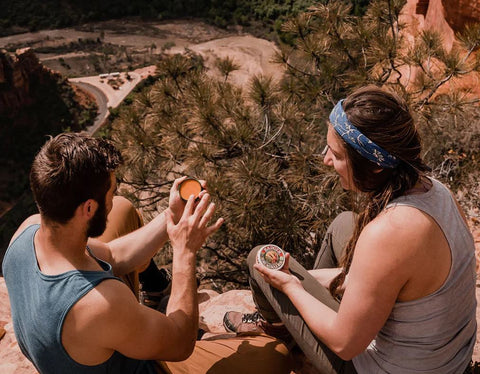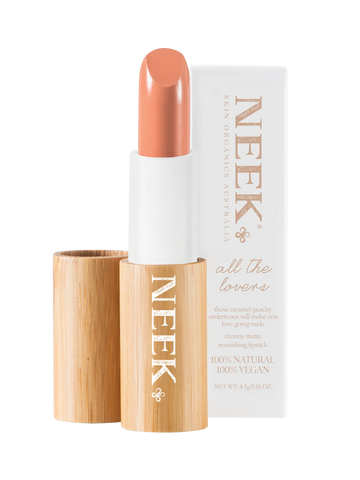
Badger Sore Muscle Rub Balm is Gluten Free
People with coeliac disease need to avoid gluten in their diet, but what about skin care products? If you are coeliac, do you need to worry about gluten in your shampoo, moisturiser, makeup or toothpaste? In this blog post, we will answer some of the most common questions about gluten and skin care for people with coeliac disease.
What is the difference between gluten free, gluten intolerant, and coeliac?
Gluten is a protein found in wheat, barley, rye and some other grains. Some people choose to avoid gluten for personal or health reasons, such as weight loss, allergies or inflammation. This is called being gluten free or following a gluten-free diet.
Some people have a condition called non-coeliac gluten sensitivity (NCGS), which means they experience symptoms such as bloating, gas, diarrhea, headache or fatigue after eating gluten. This is called being gluten intolerant or having a gluten intolerance.
Coeliac disease is an autoimmune disorder, which means the immune system mistakenly attacks the body's own tissues when exposed to gluten. This causes damage to the lining of the small intestine, which affects the absorption of nutrients and can lead to various health problems. This is called being coeliac or having coeliac disease.
People with coeliac disease need to follow a strict gluten-free diet for life to prevent further damage and complications. People with NCGS may benefit from a gluten-free diet, but it is not medically necessary. People who are gluten free by choice can decide how strict they want to be with their diet.
Can coeliacs absorb gluten through skin?
The short answer is no. Gluten cannot be absorbed through the skin and cause intestinal damage in people with coeliac disease. However, there are some situations where gluten in skin care products can pose a risk for coeliacs:
- If the product comes in contact with the mouth or eyes, such as lipstick, lip balm, toothpaste or mouthwash, even applying face moisturiser too close to your eyes and lips can also be an issue. If these products contain gluten, they can be ingested and trigger an immune response in the gut. You also have to be careful to wash your hands after applying body lotion and not putting fingers into your mouth.
- If the product causes an allergic reaction on the skin, such as itching, rash or blisters. This is called dermatitis herpetiformis (DH), which is a rare skin manifestation of coeliac disease. DH affects about 10% of people with coeliac disease and can occur even if they follow a gluten-free diet. DH can be treated with medication and a strict gluten-free diet.
Do coeliacs need gluten free shampoo?
Shampoo does not cause problems for people with coeliac disease unless they accidentally swallow it or it gets into their eyes or mouth, which can easily happen if the shampoo is running from your head down your face. Some people may prefer to use gluten-free shampoo to avoid any potential risk or discomfort.
Some ingredients that may indicate the presence of gluten in shampoo are wheat protein, hydrolyzed wheat protein, wheat germ oil, barley extract or oat extract. However, these ingredients may not always be clearly labeled on the product.
If you are unsure whether your shampoo contains gluten, you can contact the manufacturer or check online databases such as Coeliac Australia's Ingredient List or Celiac.com's Safe Gluten-Free Food List.
What skin care ingredients are not gluten free?
Besides shampoo, other skin care products that may contain gluten are moisturisers, lotions, creams, serums, masks, scrubs, cleansers, toners, makeup removers, sunscreens and cosmetics. Some ingredients that may indicate the presence of gluten in these products are:
- Triticum vulgare (wheat)
- Hordeum vulgare (barley)
- Secale cereale (rye)
- Avena sativa (oat)
- Wheat germ oil
- Hydrolyzed wheat protein
- Hydrolyzed vegetable protein
- Malt extract
- Maltodextrin
- Dextrin
- Cyclodextrin
- Modified food starch
- Brewer's yeast
Again, these ingredients may not always be clearly labeled on the product. If you are unsure whether your skin care product contains gluten, you can contact the manufacturer or check online databases such as Coeliac Australia's Ingredient List or Celiac.com's Safe Gluten-Free Food List.
Can coeliacs have gluten in makeup?
Makeup is another category of products that may contain gluten and pose a risk for people with coeliac disease. This is especially true for products that are applied near the mouth or eyes, such as lipstick, lip gloss, lip liner, eye shadow, eyeliner, mascara and foundation.
The same ingredients listed above may indicate the presence of gluten in makeup.
 Neek Lipsticks are Gluten Free
Neek Lipsticks are Gluten Free
As with skin care products, these ingredients may not always be clearly labeled on the product. If you are unsure whether your makeup contains gluten, you can contact the manufacturer or check online databases such as Coeliac Australia's Ingredient List or Celiac.com's Safe Gluten-Free Food List.
Can you kiss someone who ate gluten if you're coeliac?
Kissing someone who ate gluten can be risky for people with coeliac disease. Even a small amount of gluten transferred from the mouth of the person who ate gluten to the mouth of the person with coeliac disease can trigger an immune reaction and cause intestinal damage.
To avoid this, the person who ate gluten should brush their teeth, rinse their mouth and wash their face before kissing the person with coeliac disease. Alternatively, they can avoid eating gluten for several hours before kissing the person with coeliac disease.
Does toothpaste have gluten in it?
Because toothpaste is used in the mouth, coeliacs must use gluten free toothpaste. Most toothpastes are gluten free, but some may contain ingredients derived from wheat, barley, rye or oats. These ingredients may include:
- Triticum vulgare (wheat)
- Hordeum vulgare (barley)
- Secale cereale (rye)
- Avena sativa (oat)
- Wheat germ oil
- Hydrolyzed wheat protein
- Hydrolyzed vegetable protein
- Malt extract
- Maltodextrin
- Dextrin
- Cyclodextrin
- Modified food starch
- Brewer's yeast
If you are unsure whether your toothpaste contains gluten, you can contact the manufacturer or check online databases such as Coeliac Australia's Ingredient List or Celiac.com's Safe Gluten-Free Food List.
What happens if a coeliac accidentally eats gluten?
If a person with coeliac disease accidentally eats gluten, they may experience symptoms such as diarrhea, abdominal pain, bloating, gas, nausea, vomiting, fatigue, headache or rash. These symptoms may vary in severity and duration depending on the amount of gluten ingested and the individual's sensitivity.
The best thing to do if a person with coeliac disease accidentally eats gluten is to drink plenty of water to flush out the gluten and stay hydrated. They should also avoid eating any more gluten and stick to their gluten-free diet. They may also take over-the-counter medications to relieve pain or discomfort, such as antacids, anti-diarrheals or anti-inflammatories.
However, if the symptoms are severe or persistent, they should seek medical attention as soon as possible. They may need to be tested for complications such as anemia, osteoporosis or intestinal damage.
Gluten free choices at Biome
We have a huge range of gluten free foods and other products at Biome. The below brands either state on the packaging or their website that they are gluten free. There may be many other products at Biome that are free from gluten also.
Please note: We state brands are Gluten Free when it is on the packaging or the brand's website - we do not assess the ingredients ourselves. Brands can change formulations and mistakes can be made. Before consuming or using, please always check the ingredients yourself first to be sure.
Brands in bold mean that all products in the range are gluten free.
Skin Care, Beauty, Dental
- Neek
- Redmond EarthPaste
- My Magic Mud
- Dr Tung's - Oil Pulling Concentrate, Tooth Powder Tabs
- Love Beauty Foods - Toothpastes and Toothpowders
- Dr Hisham's
- Badger Balms
Food & Drink
- Sobah - Davison Plum Ale
- Plantasy
- Pimp My Salad
- Turban Chopsticks
- Loco Love
- Mabu Mabu - Jams and teas
- Nib + Noble - Hot Chocolate
- Oz Tukka - Muffin Mixes
- Bob's Red Mill
- Botanika Blends - Vegan Protein Custard, Nice Cream
- Natural Evolution
- Soulfull Tribe - Chocolate Dream Cake mix
- Mindful Foods & Stardust - all excluding Yeast Flakes and Golden Granola
- Byron Bay Olive Co
- Tweed Real Food
- Loving Earth - Dirty Rose, Mint, Mylk Chocolate Ginger, Double Hazy
- Pana
- Edible Beauty - Inner Essential Skin + Liver
- Nutra Organics - Acai, Super Greens + Reds, Miso Broth, Mushroom Broth
- Goli ACV Gummies
- Wanderlust - Reishi
- Sacred
- Naturally Good
- Sweet Lounge
- Oh My Gob
- BSKT
- House of Nestar - Vegan Honeycomb, Chiasome Almonds, Peanut Holic Brittle, Almonds in French Cocoa
- Benneto - all excluding Mint + Cocoa Nibs
- Bahen & Co - Drinking Chocolate
- Vego
- Supercharged Food - Love Your Gut Capsules, Diatomaceous Earth 250g
- Green Nutritionals
- Eden Health Food - Fem Balance, Wild C, Superfood, Ultimate Biotic, Immunity Shield
- Booja Booja
- Nomu Noms
Check out all our Gluten Free Resources
Bob's Red Mill gluten free flour and baking
Gluten Free Food
Gluten Free Toothpaste
Summary
People with coeliac disease need to be careful about what they eat and what they put on their skin. Gluten can be hidden in many skin care products and makeup products that can cause problems for coeliacs. The best way to avoid gluten in these products is to read the labels carefully, contact the manufacturers or check online databases for gluten-free products.
If you have any questions or concerns about gluten and skin care for people with coeliac disease, please consult your doctor or a registered dietitian. They can help you find the best products for your skin type and your health condition.
MORE READING
Our Favourite Gluten Free and Dairy Free Chocolates




































